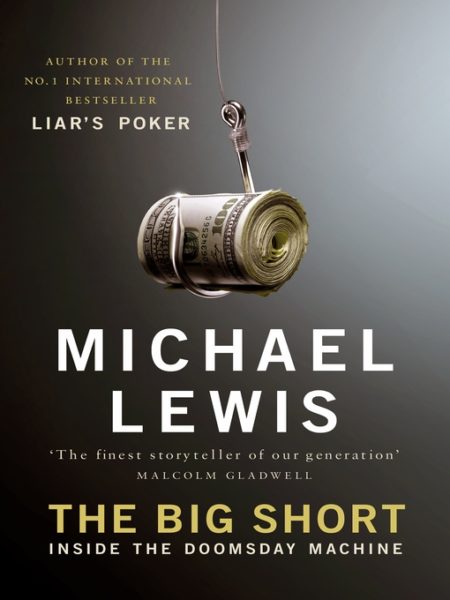By Jerry Levine
Today’s Machining World Archives June 2010 Volume 06 Issue 05
 We all know the 2008 stock market collapse had something to do with sub-prime mortgages and credit default swaps (CDS), and that AIG and Goldman Sachs received billions of bailout dollars. But how it all happened remains a mystery to most of us.
We all know the 2008 stock market collapse had something to do with sub-prime mortgages and credit default swaps (CDS), and that AIG and Goldman Sachs received billions of bailout dollars. But how it all happened remains a mystery to most of us.
In his new best seller, The Big Short, Michael Lewisattempts to clear up the confusion by following three savvy hedge fund investors who saw the crisis coming and placed bets on the market’s collapse. Big investment firms had packaged high-risk loans into securities that could be traded and persuaded the rating agencies to give them low-risk AAA ratings. These hedge fund investors saw through the sham and made fortunes on their bets against a market so complex and obscure that almost no one on Wall Street understood it. The following are a few explanations to make sense of the 2008 debacle.
What are sub-prime mortgages?
Sub-prime mortgages are home mortgages, sometimes very large, given to people who can’t afford them. These mortgages require little or no money down, have a low “teaser” interest rate for the first two or three years and then adjust.
What is a consolidated debt obligation(CDO)?
Originally, it was a consolidated group of corporate or municipal bonds that could be easily rated. It functioned like a fantasy football league, mimicking the real market, and was traded among the players. Like the commodities futures markets, its volume could be multiplied hundreds of times larger than the real market as long as there were traders to take both sides of the buy/sell arrangement and settle up their bet. One could also buy insurance, a credit default swap (CDS), on these bets.
What is a CDS and what is it used for?
Originally a CDS was an insurance policy that one could purchase to insure against a bond failing. The risk of a AAA corporate bond or a whole group of them in a CDO failing is very low and the insurance was very cheap. However, as the situation developed the insurance covered CDOs filled with poor risks such as sub-prime mortgages, auto loans and credit card debt, yet the rating agencies continued to rate them AAA.
Why did the rating agencies (Standard and Poors, Moodys) do this?
The rating agencies had a huge conflict of interest. Not only did they have no model to rate the creditworthiness of a home mortgage, they took advice from firms like Goldman Sachs, who were creating and selling them. They also did this because they wanted other more lucrative Goldman Sachs business.
What did the hedge fund operators who bet against the sub-primes see?
As early as 2004, a few small hedge fund operators realized that many CDOs were soup bones masquerading as T-bones. They realized that the sub-prime ARMs
would readjust heavily in 2007, causing a huge number of foreclosures and the house of cards to collapse. Amazingly, it didn’t. Mortgages failed and foreclosures
skyrocketed, but the CDO and synthetic CDO markets remained stable. To cash in, the hedge fund operators needed the market to crash.
The final worrisome question is—could it happen again?
Sadly, it’s almost a surety. A new term, “A Minsky Moment” was coined following this debacle. Hyman Minsky, a relatively unknown counter-culture economist, wrote 25 years ago that by its nature capitalism is unstable and unfair. Some innovative trader will at some point create a new high-reward, high-risk instrument to captivate the market’s collective greed until the bubble bursts. Many Wall Street firms and banks are deemed “too big to fail.” The Fed will always bail them out, so Wall Street gets the upside reward while taxpayers cover the downside risk.

1 Comment
Yes, and all the furious effort by our elected leaders to close the barn door after the cow has escaped will come to naught. Recently, the Federal Reserve issued a report that was largely ignored by an adoring press. It admitted that Fannie Me and Freddie Mac “strayed from their core mission” and suggested that in future, the government’s role should be limited to “robust regulation”.
What’s galling is that the very same politicians (you know who you are, Frank and Dodd)who, by shielding Fannie and Feddie from scrutiny enabled our government’s participation in and encouragement of the real estate bubble, have laid all the blame on the so-called “fat cats” on Wall Street, without whom we would have no economy at all. The intelligence deficit or outright dishonesty of some of these guys is simply breathtaking.